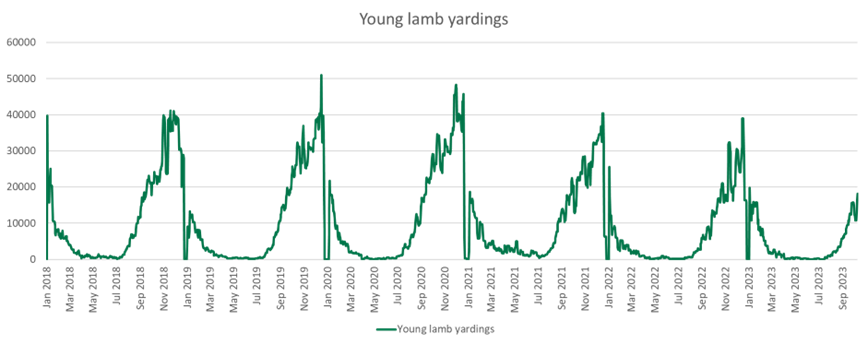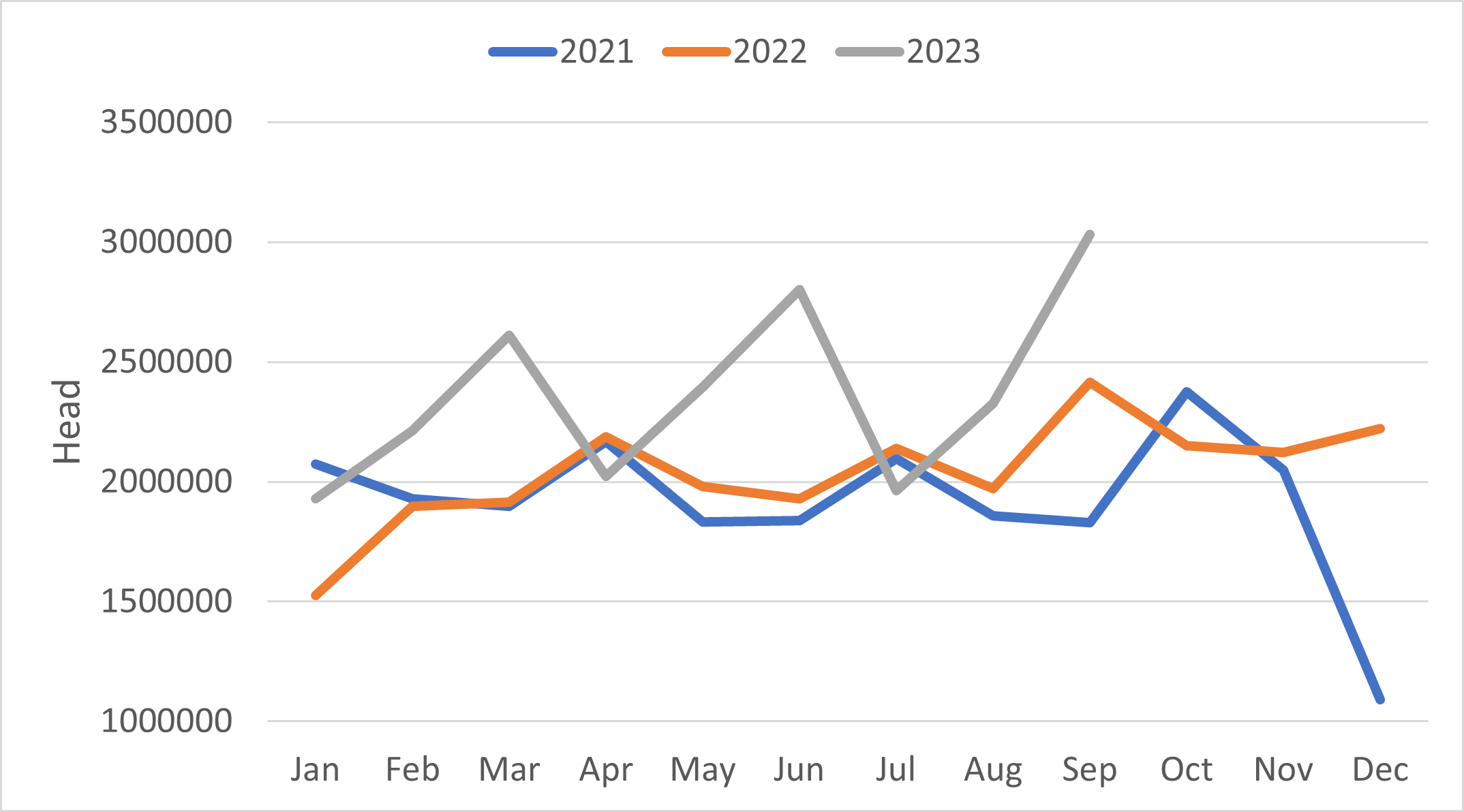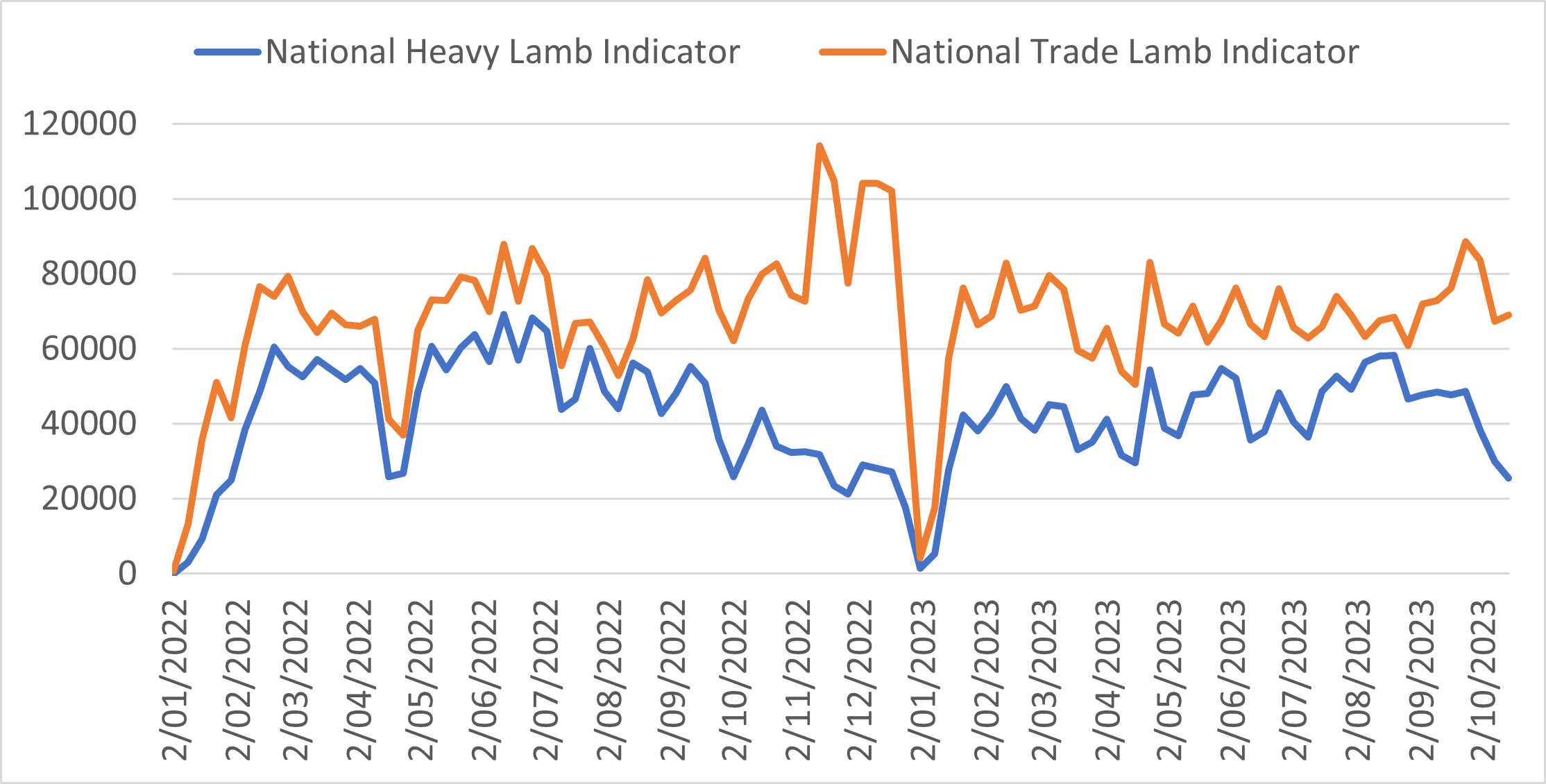Lamb slaughter set to surpass 22 million
Key points
- Young lamb yardings picked up from August and are tracking higher than the same time last year.
- Lamb slaughter for 2023 is set to surpass 22 million.
- The bottleneck is putting pressure on producers to find a place for their lambs.
Sheep and lambs follow a seasonal pattern where conception starts in January/February and are then born in June/July of the same year. During spring, pastures are growing the fastest, lambs are being weaned and begin to put on weight. During this time of the year lamb supply is at its highest.

Slaughter
This year, sheep slaughter is 16% higher compared to 2022, illustrating an oversupply in the market. The slight easing during Oct–Nov in 2022 is unlikely to occur again this year as weather is favourable on the east coast, leading to a more positive outcome for sheep slaughter in 2023.
This year has been a unique situation because the nation’s breeding ewe flock will reach its highest level since 2007 at 46.14 million head.
Given the record supply with sheep slaughter rising, this has likely resulted in the sheep indicators easing by 36–68%.
The price has fallen by 70% for mutton while heavy lamb, which is a more premium product, has fallen by 36%, illustrating how premium lamb indicators are relatively steady when compared to commodity lamb.


With slaughter at record levels, producers may start to see supply of lambs on the market outweighing processor demand. Coming into the spring flush with new lambs entering the market, older lambs may no longer fall into processor specifications.
The industry definition for an animal to be regarded as ‘lamb’ is ‘young sheep under 12 months of age or which do not have any permanent incisor teeth in wear’. When a sheep reaches 12 months or breaks teeth, whichever comes first, they become ‘mutton’.
As of 12 October, the mutton indicator is 121¢/kg cwt, versus the trade lamb indicator at 454¢/kg cwt. If a producer is unable to find space for their product when their stock age out of the lamb specifications, they could be hit with a 26.6% discount.



